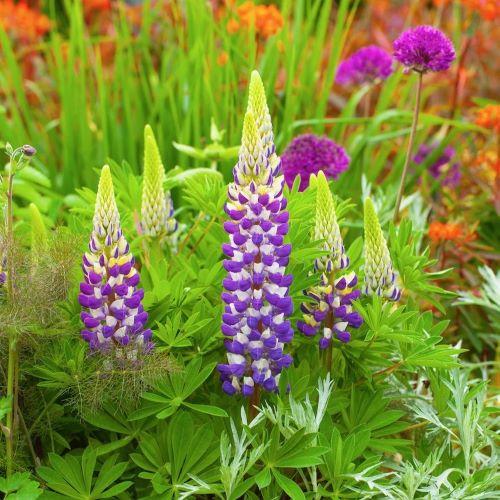Lupinus polyphyllus 'Cierra Lupinova®', commonly known as Lupin, is a perennial plant native to North America. This lupine is distinguished by its superb purple and white flower spikes and attractive foliage. Perfect for beds and borders, it adds a touch of vivacity and charm to the garden in spring and summer.
|
Packaging
To find out more about our packaging, please visit our young plants' page available from the website header.

|
Available quantity | Dispo à partir de | Sold by | Desired quantity | |
|---|---|---|---|---|---|
|
Le stock n'est actuellement pas disponible pour ce produit. |
|||||
Characteristics of LUPINUS polyphyllus Cierra Lupinova ®:
Lupinus polyphyllus 'Cierra Lupinova®' is an upright perennial reaching a height of 0.5 to 1 metre and a width of 0.5 metre. This plant prefers full sun, although it can also tolerate part shade. Its deciduous foliage is medium green and very hardy, able to withstand temperatures down to -20°C. It flowers in spring and summer, with purple and white spikes that attract pollinators.
How to use LUPINUS polyphyllus Cierra Lupinova ®?
Lupinus polyphyllus 'Cierra Lupinova®' is ideal for beds and borders, where it adds height and bursts of colour. Its multi-coloured flower spikes create striking focal points in the garden. It can also be grown in pots to enhance terraces and balconies. In combination with other perennials, it helps to create dynamic, attractive floral arrangements, attracting bees and butterflies.
What advice do you have for growing LUPINUS polyphyllus Cierra Lupinova ® successfully?
To grow Lupinus polyphyllus 'Cierra Lupinova®' successfully, plant it in well-drained, slightly acid soil enriched with organic matter. Space the plants 40 to 50 cm apart to ensure good air circulation and prevent fungal diseases. Water regularly, especially during dry spells, but avoid over-watering. Remove spent flowers to prolong flowering. In autumn, mulch the base of the plants to protect the roots over winter. Light fertilisation in spring will encourage vigorous growth and abundant flowering.









